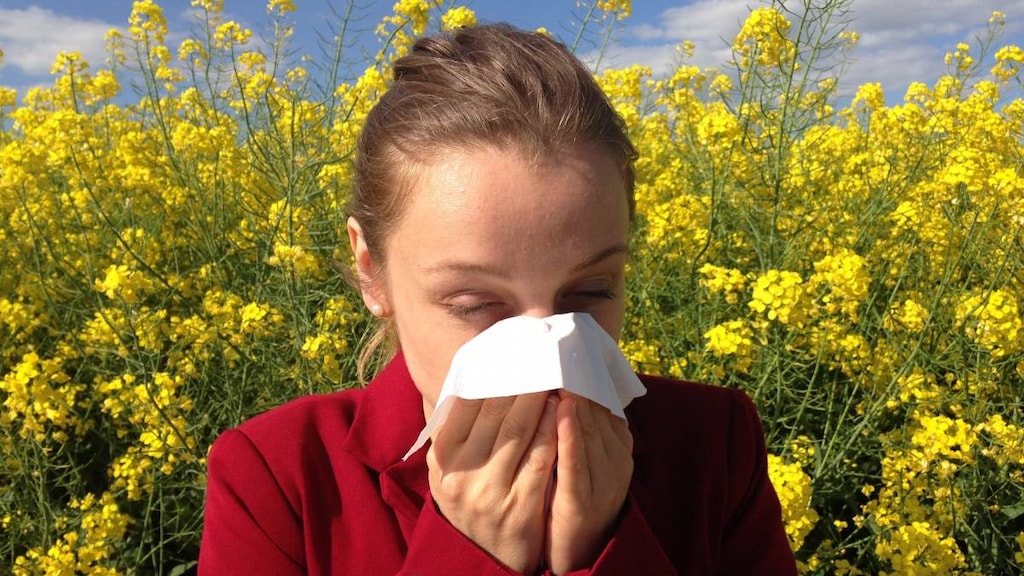Dosage Forms
Excipient information presented when available (limited, particularly for generics); consult specific product labeling.
Implant, Nasal, as furoate:
Sinuva: 1350 mcg (1 ea)
Suspension, Nasal, as furoate:
Nasonex: 50 mcg/actuation (17 g) [contains benzalkonium chloride, polysorbate 80]
Generic: 50 mcg/actuation (17 g)
Pharmacology
Mechanism of Action
May depress the formation, release, and activity of endogenous chemical mediators of inflammation (kinins, histamine, liposomal enzymes, prostaglandins). Leukocytes and macrophages may have to be present for the initiation of responses mediated by the above substances. Inhibits the margination and subsequent cell migration to the area of injury, and also reverses the dilatation and increased vessel permeability in the area resulting in decreased access of cells to the sites of injury.
Pharmacokinetics/Pharmacodynamics
Absorption
Undetectable in plasma; clinical effects are due to direct local effect, rather than systemic absorption
Distribution
IV: Vd: 152 L
Metabolism
Hepatic; extensive via CYP3A4 to multiple metabolites
Excretion
Bile (primary route); urine (limited)
Onset of Action
Spray: Improvement in allergic rhinitis symptoms may be seen within 11 hours; Maximum effect: Within 1 to 2 weeks after starting therapy
Duration of Action
Implant: ≤90 days
Half-Life Elimination
IV: ~5 to 6 hours
Protein Binding
98% to 99%
Use in Specific Populations
Special Populations: Hepatic Function Impairment
Concentrations may increase with severity of hepatic impairment
Use: Labeled Indications
Allergic rhinitis (seasonal and perennial) (spray only): Treatment of nasal symptoms of seasonal allergic and perennial allergic rhinitis in adults and pediatric patients ≥2 years.
Nasal congestion associated with seasonal rhinitis (spray only): Relief of nasal congestion associated with seasonal allergic rhinitis in adults and pediatric patients ≥2 years.
Nasal polyps: Treatment of nasal polyps in patients ≥18 years. Note: Implant is for patients who have had ethmoid sinus surgery.
Seasonal allergic rhinitis (prophylaxis) (spray only): Prophylaxis of nasal symptoms of seasonal allergic rhinitis in adults and pediatric patients ≥12 years.
Use: Off Label
Rhinosinusitis, adjunctive treatment (acute)yes
Based on the Infectious Diseases Society of America (IDSA) guidelines for acute bacterial rhinosinusitis (ABRS) in children and adults and the American Academy of Otolaryngology-Head and Neck Surgery Foundation (AAO-HNS) guidelines for adult sinusitis, mometasone (nasal), among other intranasal corticosteroids, is effective and recommended as an adjunctive treatment to antibiotic therapy for the management of ABRS primarily when a history of allergic rhinitis exists (according to IDSA guidelines).
Rhinosinusitis, treatment (acute, mild to moderate, uncomplicated)b
Data from a randomized, double-blind, double-dummy, placebo-controlled study supports the use of intranasal mometasone in the treatment of acute, uncomplicated rhinosinusitis. Intranasal mometasone was more effective than placebo or amoxicillin in reducing major symptom scores. Symptomatic improvement occurred as early as day 2 of mometasone treatment Meltzer 2005. Additional trials may be necessary to further define the role of intranasal mometasone in this condition.
Chronic rhinosinusitisyes
Based on the American Academy of Otolaryngology-Head and Neck Surgery Foundation (AAO-HNS) guidelines for adult sinusitis, mometasone (nasal), among other intranasal corticosteroids, is effective and recommended (with or without nasal saline irrigation) for the symptomatic relief of chronic rhinosinusitis.
Contraindications
Hypersensitivity to mometasone or any component of the formulation.
Documentation of allergenic cross-reactivity for corticosteroids is limited. However, the possibility of cross-sensitivity cannot be ruled out with certainty because of similarities in chemical structure and/or pharmacologic actions.
Dosage and Administration
Dosing: Adult
Allergic rhinitis (seasonal and perennial): Intranasal: 2 sprays (100 mcg) in each nostril once daily (total daily dose: 200 mcg)
Nasal congestion associated with seasonal rhinitis: Intranasal: 2 sprays (100 mcg) in each nostril once daily (total daily dose: 200 mcg)
Nasal polyps:
Intranasal: 2 sprays (100 mcg) in each nostril twice daily (total daily dose: 400 mcg); 2 sprays (100 mcg) in each nostril once daily may be effective in some patients
Implant: 1 implant (1,350 mcg) placed in the ethmoid sinus under endoscopic visualization for up to 90 days
Seasonal allergic rhinitis (prophylaxis): Intranasal: 2 sprays (100 mcg) in each nostril once daily (total daily dose: 200 mcg); treatment should begin 2 to 4 weeks prior to the anticipated start of pollen season
Rhinosinusitis, adjunctive treatment (acute) (off-label use): Intranasal: Intranasal corticosteroids such as mometasone are recommended by IDSA and AAO-HNS guidelines but no specific dosing recommendations are made. Alternatively, the following dosing recommendations have been made: 2 sprays (100 mcg) in each nostril twice daily (total daily dose: 400 mcg); if inadequate symptom control, may increase to 4 sprays (200 mcg) in each nostril twice daily (total daily dose: 800 mcg) (Nasonex Canadian product labeling).
Rhinosinusitis, treatment (acute, mild to moderate, uncomplicated) (off-label use): Intranasal: 2 sprays (100 mcg) in each nostril twice daily (total daily dose: 400 mcg); up to 15 days of treatment was studied (Meltzer 2005)
Dosing: Geriatric
Refer to adult dosing.
Dosing: Pediatric
Allergic rhinitis; perennial (relief of nasal symptoms) and seasonal (relief of nasal symptoms and congestion): Intranasal: Spray (50 mcg/spray):
Prevention: Children ≥12 years and Adolescents: 100 mcg (2 sprays) per nostril once daily (total daily dose: 200 mcg/day) beginning 2 to 4 weeks prior to pollen season
Treatment:
Children 2 to 11 years: 50 mcg (1 spray) per nostril once daily (total daily dose: 100 mcg/day)
Children ≥12 years and Adolescents: 100 mcg (2 sprays) per nostril once daily (total daily dose: 200 mcg/day)
Nasal airway obstruction/adenoidal hypertrophy: Limited data available: Children and Adolescents 3 to 15 years: Intranasal: Spray: Initial: 50 mcg (1 spray) per nostril once daily (total daily dose: 100 mcg/day) for 6 weeks, followed by the same dose given every 24 hours for the first 2 weeks of each month. Dosing based on two studies: The first was a randomized, placebo-controlled study (n=122; treatment arm: 67; age range; 3 to 15 years) in which patients received therapy for 6 weeks and 67.2% had a significant decrease in adenoid size compared to the control group (p<0.001) (Cengel 2006). The second was a 2-stage, placebo-controlled, randomized study (n=60, treatment arm: 30; age range: 3 to 7 years) which showed that after 40 days of daily mometasone therapy, ~77.7% of patients were considered responders and able to avoid adenoidectomy; those who responded continued therapy every 24 or 48 hours for the first 2 weeks of three subsequent months (Berlucchi 2007). Long-term analysis of children receiving the daily dose for the first 2 weeks of each month continued to show improvement after a mean followup period of 28 months and the need for surgery remained reduced (Berlucchi 2008). A meta-analysis of eight randomized trials supported significant decrease in adenoid size and improvement in otitis media with effusion in this population (Chohan 2015).
Nasal polyps, treatment: Adolescents ≥18 years: Intranasal:
Implant: 1 implant (1,350 mcg) placed in the ethmoid sinus under endoscopic visualization for up to 90 days
Spray: 100 mcg (2 sprays) per nostril twice daily (total daily dose: 400 mcg/day); a lower dose of 200 mcg once daily delivered as 100 mcg (2 sprays) per nostril once daily may be effective in some patients
Administration
Intranasal:
Spray: For intranasal administration only. Prime pump (press 10 times or until fine spray appears) prior to first use. If 7 or more days have elapsed since last use, reprime pump with 2 sprays or until a fine mist appears. Shake before using. Blow nose to clear nostrils. Insert applicator into nostril, tilt head slightly forward keeping bottle upright, and close off the other nostril. Breathe in through nose. While inhaling, press pump to release spray; exhale through mouth. After each use, wipe the spray tip with a clean tissue and replace cap. Avoid spraying directly into nasal septum, eyes or mouth. Discard after 120 medicated sprays have been used, even if bottle is not completely empty.
Implant: Place in the ethmoid sinus under endoscopic visualization; avoid bending, twisting, or damaging implant; do not compress or load implant into the delivery system more than 2 times. Refer to manufacturer's product labeling for complete preparation, administration, and removal information.
Storage
Store at 25°C (77°F); excursions permitted to 15°C to 30°C (59°F to 86°F). Protect nasal spray from light.
Drug Interactions
Desmopressin: Corticosteroids (Nasal) may enhance the hyponatremic effect of Desmopressin. Avoid combination
Esketamine: Corticosteroids (Nasal) may diminish the therapeutic effect of Esketamine. Management: Patients who require a nasal corticosteroid on an esketamine dosing day should administer the nasal corticosteroid at least 1 hour before esketamine. Consider therapy modification
Ritodrine: Corticosteroids may enhance the adverse/toxic effect of Ritodrine. Monitor therapy
Adverse Reactions
>10%:
Central nervous system: Headache (adolescents and adults, nasal spray: 26%; adults, sinus implant: 4%)
Infection: Viral infection (adolescents and adults, nasal spray: 14%)
Respiratory: Epistaxis (adolescents and adults, nasal spray: ≤13%; adults, sinus implant: 2%), pharyngitis (adolescents and adults, nasal spray: 12%), chronic sinusitis (adults, sinus implant: 11%), blood in nasal mucosa (adolescents and adults, nasal spray: ≤11%)
1% to 10%:
Cardiovascular: Chest pain (adolescents and adults, nasal spray: ≥2% to <5%)
Dermatologic: Skin changes (trauma; children, nasal spray: ≥2% to <5%)
Gastrointestinal: Vomiting (children, nasal spray: 5%), diarrhea (nasal spray: ≥2% to <5%), dyspepsia (adolescents and adults, nasal spray: ≥2% to <5%), nausea (adolescents and adults, nasal spray: ≥2% to <5%)
Genitourinary: Dysmenorrhea (adolescents and adults, nasal spray: 5%)
Hypersensitivity: Hypersensitivity reaction (adults, sinus implant: 4%)
Neuromuscular & skeletal: Musculoskeletal pain (adolescents and adults, nasal spray: 5%), arthralgia (adolescents and adults, nasal spray: ≥2% to <5%), myalgia (adolescents and adults, nasal spray: ≥2% to <5%)
Ophthalmic: Conjunctivitis (adolescents and adults, nasal spray: ≥2% to <5%)
Otic: Otalgia (adolescents and adults, nasal spray: ≥2% to <5%), otitis media (≥2% to <5%)
Respiratory: Upper respiratory tract infection (5% to 8%), cough (adolescents and adults, nasal spray: 7%), sinusitis (adolescents and adults, nasal spray: 5%), asthma (adolescents and adults: ≥2% to <5%), bronchitis (adolescents and adults: ≥2% to <5%), flu-like symptoms (adolescents and adults, nasal spray: ≥2% to <5%), nasal mucosa irritation (children, nasal spray: ≥2% to <5%), rhinitis (adolescents and adults, nasal spray: ≥2% to <5%), wheezing (children, nasal spray: ≥2% to <5%), nasopharyngitis (adults, sinus implant: 1%), sinus headache (adolescents and adults, nasal spray: 1%)
Frequency not defined: Respiratory: Nasal candidiasis, nasal mucosa ulcer, pharyngeal candidiasis
<1%, postmarketing, and/or case reports: Altered sense of smell, anaphylaxis, angioedema, blurred vision, burning sensation of the nose, dysgeusia, nasal septum perforation
Warnings/Precautions
Concerns related to adverse effects:
- Adrenal suppression: When recommended doses are exceeded, or in extremely sensitive individuals, may cause hypercortisolism or suppression of hypothalamic-pituitary-adrenal (HPA) axis. Reports consistent with hypercortisolism are rare. HPA axis suppression may lead to adrenal crisis. Withdrawal and discontinuation of a corticosteroid should be done slowly and carefully. Fatalities have occurred due to adrenal insufficiency in asthmatic patients during and after transfer from systemic corticosteroids to aerosol steroids; aerosol steroids do not provide the systemic steroid needed to treat patients having trauma, surgery, or infections.
- Delayed wound healing: Avoid nasal corticosteroid use in patients with recent nasal septal ulcers, nasal surgery, or nasal trauma until healing has occurred.
- Hypersensitivity reactions: Hypersensitivity reactions, including rash, pruritus, angioedema, and wheezing, have been reported; discontinue if such reactions occur.
- Immunosuppression: Prolonged use of corticosteroids may also increase the incidence of secondary infection, mask acute infection (including fungal infections), prolong or exacerbate viral infections, or limit response to vaccines. Avoid exposure to chickenpox and/or measles, especially if not immunized.
- Local nasal effects: Nasal septum perforation, epistaxis, irritation, and infection of the nose and/or pharynx may occur. Periodically examine nasal mucosa; discontinuation of therapy may be necessary if an infection occurs. Avoid use of nasal implant in patients with nasal ulcers or trauma.
Disease-related concerns:
- Hepatic impairment: Use with caution in patients with hepatic impairment: drug accumulation may increase with severity of hepatic impairment.
- Infections: Use with caution or avoid use in patients with active or latent tuberculosis infection of the respiratory tract; untreated systemic fungal, bacterial, viral, or parasitic infections; or ocular herpes simplex. Do not use in untreated localized infection involving the nasal mucosa; concurrent antimicrobial therapy should be administered if bacterial infection of the sinuses is suspected/confirmed.
- Ocular disease: Use with caution in patients with cataracts and/or glaucoma; increased intraocular pressure, glaucoma, and cataracts have occurred with prolonged use. Consider routine eye exams in chronic users or in patients who report visual changes.
Concurrent drug therapy issues:
- Drug-drug interactions: Potentially significant interactions may exist, requiring dose or frequency adjustment, additional monitoring, and/or selection of alternative therapy. Consult drug interactions database for more detailed information.
Special populations:
- Pediatric: Avoid using higher than recommended dosages; suppression of linear growth (ie, reduction of growth velocity), reduced bone mineral density, or hypercortisolism (Cushing syndrome) may occur; titrate to lowest effective dose. Reduction in growth velocity may occur when corticosteroids are administered to pediatric patients, even at recommended doses via intranasal route (monitor growth).
Other warnings/precautions:
- Appropriate use: Implant: For patients who have had ethmoid sinus surgery; insertion by health care providers trained in otolaryngology only. There are no studies evaluating repeat implantation of the implant.
- Appropriate use: Spray: Prior to use, the dose and duration of treatment should be based on the risk vs benefit for each individual patient. In general, use the smallest effective dose for the shortest duration of time to minimize adverse events. A gradual tapering of dose may be required prior to discontinuing therapy. There have been reports of systemic corticosteroid withdrawal symptoms (eg, joint/muscle pain, lassitude, depression) when withdrawing inhalation therapy.
Monitoring Parameters
Growth (adolescents and children); signs/symptoms of HPA axis suppression/adrenal insufficiency; glaucoma and/or cataracts, especially in patients with a change in vision; adverse nasal effects (eg, nasal septal perforation, nasal ulceration, irritation, epistaxis, infection).
Pregnancy
Pregnancy Risk Factor
C
Pregnancy Considerations
Adverse events have been observed in some animal reproduction studies.
Intranasal corticosteroids, including mometasone, may be acceptable for the treatment of rhinitis during pregnancy when used at recommended doses (Lal 2016; Wallace 2008). Pregnant women adequately controlled on mometasone may continue therapy; if initiating treatment during pregnancy, use of an agent with more data in pregnant women may be preferred (Namazy 2016; Wallace 2008).
Patient Education
What is this drug used for?
- It is used to treat and prevent allergy signs.
- It is used to treat nose polyps.
Frequently reported side effects of this drug
- Headache
- Nosebleed
- Common cold symptoms
- Cough
- Muscle pain
- Nasal irritation
- Throat irritation
Other side effects of this drug: Talk with your doctor right away if you have any of these signs of:
- Infection
- Adrenal gland problems like severe nausea, vomiting, severe dizziness, passing out, muscle weakness, severe fatigue, mood changes, lack of appetite, or weight loss
- Nasal sores
- Wheezing
- Thrush
- Painful periods
- Vision changes
- Signs of a significant reaction like wheezing; chest tightness; fever; itching; bad cough; blue skin color; seizures; or swelling of face, lips, tongue, or throat.
Note: This is not a comprehensive list of all side effects. Talk to your doctor if you have questions.
Consumer Information Use and Disclaimer: This information should not be used to decide whether or not to take this medicine or any other medicine. Only the healthcare provider has the knowledge and training to decide which medicines are right for a specific patient. This information does not endorse any medicine as safe, effective, or approved for treating any patient or health condition. This is only a brief summary of general information about this medicine. It does NOT include all information about the possible uses, directions, warnings, precautions, interactions, adverse effects, or risks that may apply to this medicine. This information is not specific medical advice and does not replace information you receive from the healthcare provider. You must talk with the healthcare provider for complete information about the risks and benefits of using this medicine.




